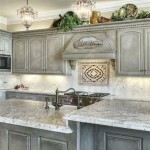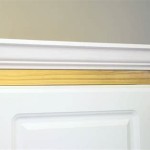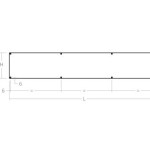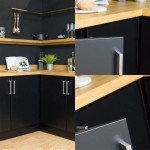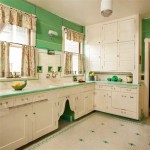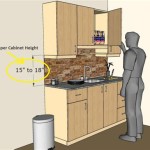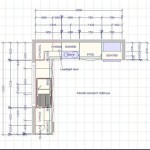Glass Painting Designs for Kitchen Cabinets
Kitchen cabinets are essential components of any kitchen, serving both functional and aesthetic purposes. They provide storage space for cookware, dishes, and food items while also contributing significantly to the overall style and ambiance of the room. While solid wood or laminate cabinets are common choices, glass-front cabinets offer a unique opportunity to incorporate decorative elements and personalize the kitchen space. Glass painting, in particular, presents a versatile and creative method for enhancing kitchen cabinets, allowing for the integration of intricate designs, vibrant colors, and personalized motifs.
The appeal of glass painting lies in its ability to transform ordinary glass panels into works of art. It combines artistic expression with practical design, providing a customized and visually appealing solution for kitchen décor. From simple patterns to complex scenes, the possibilities are virtually limitless. Glass painting can complement any kitchen style, whether it is traditional, contemporary, or eclectic. Furthermore, it can be adapted to suit various budgets and skill levels, making it an accessible option for homeowners looking to add a unique touch to their kitchen cabinets.
This article explores different glass painting designs suitable for kitchen cabinets, outlining various techniques, design considerations, and practical tips for achieving professional-looking results. It aims to provide a comprehensive overview of the possibilities that glass painting offers, empowering readers to select designs that reflect their personal style and enhance the aesthetic appeal of their kitchen space.
Choosing the Right Glass and Paint for Kitchen Cabinets
Selecting the appropriate glass type is crucial for the successful execution of glass painting on kitchen cabinets. Tempered glass is generally recommended due to its enhanced strength and safety features. Unlike regular glass, tempered glass shatters into small, relatively harmless pieces when broken, reducing the risk of injury. This quality is especially important in a high-traffic area like the kitchen. Safety glass offers another option for homeowners looking to enhance the security of their kitchen. While regular glass can be used, the added safety of tempered or safety glass often justifies the increased cost.
Different types of glass offer varying levels of opacity and texture, which can influence the final appearance of the painted design. Clear glass provides maximum transparency, allowing the painted design to be fully visible. Frosted glass, on the other hand, offers a degree of privacy while still permitting light to pass through, creating a softer and more diffused effect. Patterned glass, such as reeded or textured glass, can add visual interest and create a unique backdrop for the painted design. Consider the desired level of visibility and the overall design aesthetic when choosing the glass type.
The selection of paint specifically formulated for glass is equally important. Acrylic enamel paints are a popular choice due to their durability, water resistance, and ease of application. These paints adhere well to glass surfaces and provide a smooth, even finish. Solvent-based glass paints offer enhanced durability and resistance to scratching, making them suitable for high-use kitchen cabinets. However, solvent-based paints require proper ventilation and safety precautions during application.
Water-based glass paints are a safer and more environmentally friendly option, but they may require multiple coats to achieve the desired opacity and durability. Consider the specific requirements of the project, the desired level of durability, and personal preferences when choosing the paint type. Always follow the manufacturer's instructions regarding surface preparation, application techniques, and drying times.
Exploring Different Glass Painting Design Styles
A wide array of design styles can be employed when glass painting kitchen cabinets, allowing for the creation of personalized and visually appealing spaces. One popular option is incorporating floral patterns, which can range from delicate and intricate designs to bold and stylized motifs. Floral patterns can add a touch of elegance and natural beauty to the kitchen, complementing various décor styles. Consider using stencils or freehand painting techniques to create floral designs that match the color palette and overall theme of the kitchen.
Geometric patterns offer a contemporary and versatile design option for glass painting. These patterns can be simple or complex, depending on personal preferences and the desired aesthetic. Geometric designs can incorporate a variety of shapes, such as squares, triangles, circles, and lines, to create visually striking compositions. The use of contrasting colors can enhance the impact of geometric patterns, adding depth and dimension to the kitchen cabinets. Geometric patterns also work well with modern kitchen designs.
Abstract designs provide an opportunity for creative expression and artistic experimentation. These designs can range from simple color washes to complex and layered compositions. Abstract glass painting can incorporate various techniques, such as splattering, marbling, and stippling, to create unique and visually interesting effects. The use of metallic paints or textured finishes can add further dimension and visual appeal to abstract designs. Consider using a clear sealer to protect the abstract glass painting from damage.
Trompe-l'oeil, which translates to "deceive the eye," is a technique that creates the illusion of three-dimensional objects on a flat surface. This technique can be used to paint realistic images of fruits, vegetables, utensils, or other kitchen-related items on the glass panels, adding a touch of whimsy and visual interest to the kitchen. Trompe-l'oeil glass painting requires advanced artistic skills and attention to detail, but the results can be truly stunning.
Stained glass effects can be achieved through glass painting, creating the appearance of traditional stained glass windows. This technique involves using lead lines to define individual panes of color, mimicking the look of authentic stained glass. Stained glass effects can add a touch of elegance and sophistication to the kitchen, particularly in traditional or Victorian-style homes. Specialized lead paint or adhesive lead strips can be used to create the lead lines, followed by filling the panes with colored glass paints.
Techniques and Tips for Achieving Professional Results
Proper surface preparation is essential for achieving professional-looking glass painting results. Begin by thoroughly cleaning the glass surface to remove any dirt, grease, or residue. Use a glass cleaner or a mixture of soap and water, followed by rinsing with clean water. Dry the glass surface completely with a lint-free cloth. If the glass surface is particularly dirty or greasy, consider using a degreasing agent to ensure proper paint adhesion.
Masking off the areas that are not to be painted is a crucial step in achieving clean and precise lines. Use painter's tape to carefully mask off the edges of the glass panels, ensuring that the tape is firmly pressed against the surface to prevent paint bleed. For intricate designs, consider using a stencil or template to guide the masking process. Remove the tape immediately after painting to avoid the paint from drying and creating jagged edges.
Applying thin and even coats of paint is essential for achieving a smooth and professional-looking finish. Avoid applying thick coats of paint, as this can lead to runs, drips, and uneven drying. Use a soft-bristled brush or foam applicator to apply the paint in smooth, consistent strokes. Allow each coat of paint to dry completely before applying the next coat. Multiple thin coats are preferable to a single thick coat.
Using stencils and templates can simplify the process of creating intricate designs on glass surfaces. Stencils can be purchased pre-made or created using a stencil cutter or craft knife. Secure the stencil to the glass surface using painter's tape or adhesive spray. Apply the paint through the stencil using a stencil brush or sponge. Remove the stencil carefully after painting to avoid smudging the design.
Adding texture to glass painting can enhance its visual appeal and create unique effects. Various techniques can be used to add texture, such as stippling, sponging, and dry brushing. Stippling involves using a brush with stiff bristles to create a dotted texture on the glass surface. Sponging involves dabbing a sponge onto the glass surface to create a textured effect. Dry brushing involves using a dry brush with a small amount of paint to create a textured effect.
Sealing the finished glass painting is essential for protecting it from damage and ensuring its longevity. Apply a clear acrylic sealant or varnish to the painted surface after the paint has fully dried. This will protect the paint from scratching, fading, and moisture damage. Select a sealant that is compatible with the type of paint used and follow the manufacturer's instructions regarding application and drying times.
When working with glass painting supplies, it is essential to prioritize safety. Wear appropriate protective gear, such as gloves and safety glasses, to prevent skin and eye irritation. Work in a well-ventilated area to avoid inhaling harmful fumes from paints and solvents. Dispose of used paint containers and cleaning supplies properly according to local regulations. Store paints and solvents in a safe and secure location, away from children and pets.
By carefully considering these design elements and following these techniques, homeowners can create stunning glass painting designs for their kitchen cabinets, transforming their kitchen into a personalized and visually appealing space.

Stained Glass No 1 And 2 Of 6 Kitchen Cabinets Door Flowers Paint

Blue Iris Kitchen Cabinet Panels Designer Glass Mosaics

Painted Interior Glass Cabinets Diy Kitchen Renovation Remodel Pictures
:strip_icc()/101907748-fadea427f6ec438f83f8437745c6fcc8.jpg?strip=all)
Glass Front Cabinetry

10 Styling Ideas That Make Glass Front Cabinet Displays Beautiful Lora Bloomquist Create Ponder

Painting The Back Of Cabinets Black Our Fifth House Kitchen Cabinet Remodel Renovation Decor

Modern Kitchen Door Glass Design For Your Home Cafe

Painted Kitchen Cabinet Ideas Architectural Digest

Etched Glass Kitchen Cabinet Doors Nuetch Art For
:strip_icc()/101140874-1ceefb4d08fd4430b4c95c22a856084d.jpg?strip=all)
23 Stylish Ideas For Kitchen Cabinet Doors
Related Posts

